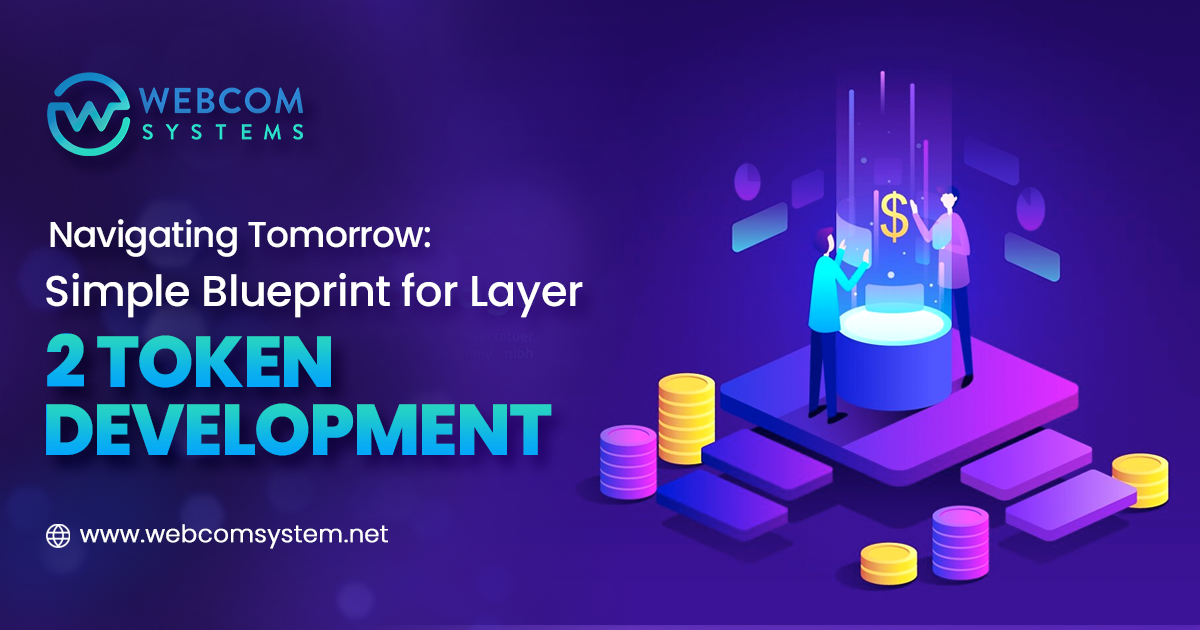In the constantly evolving landscape of blockchain technology, Layer 2 token development stands as an important advancement. The significance of this lies in its ability to tackle the urgent issues of scalability and high fees in blockchain networks. Layer 2 solutions present an exciting opportunity to boost transaction speed and efficiency while maintaining a high level of security. The impact of these solutions resonates throughout the blockchain ecosystem, driving innovation, expanding potential applications, and widespread adoption. It is crucial to understand the fundamentals of developing Layer 2 tokens in order to utilize the potential of Blockchain Technology and drive its progress toward enhanced accessibility and functionality.
This article explores the future of Layer 2 token development by providing a simple blueprint.
Understanding Layer 2 Token Development
When it comes to blockchain and token development, Layer 2 solutions offer a range of protocols and techniques that work on top of existing blockchains. Their primary purpose is to tackle common drawbacks, such as slow transaction speeds and excessive fees. These solutions work independently from the main chain, improving its capabilities without altering the underlying consensus rules.
As more and more transactions occur, these networks experience congestion, causing delays in processing and higher fees. Layer 2 solutions reduce these challenges by enabling off-chain processes, allowing for faster and more cost-effective transactions.
Layer 2 solutions offer advantages that go beyond simply addressing these challenges. They significantly enhance efficiency by facilitating transactions off-chain, reducing the burden on the main blockchain. This leads to increased throughput and scalability, enabling a higher number of transactions per second. Moreover, Layer 2 solutions play a crucial role in reducing congestion on the main chain, resulting in reduced transaction costs and increased accessibility for users and developers interested in utilizing Blockchain Technology.
Key Components of Layer 2 Token Development
Layer 2 token development incorporates several key components that optimize blockchain performance while maintaining strong security measures. Understanding these fundamental elements is crucial to grasp the mechanics of Layer 2 solutions.
-
Sidechains
These are separate blockchains connected to the main blockchain, allowing transactions to be processed off-chain. Sidechains make transactions quicker and less expensive by lessening the burden on the main chain, all while ensuring seamless compatibility and interoperability.
-
State Channels
With state channels, participants can easily carry out a multitude of transactions without putting strain on the main chain. This allows for a more efficient flow of transactions by minimizing the need for on-chain interactions.
-
Rollups
Rollups are a technique that builds multiple transactions off-chain and then submits a single compressed transaction or data to the main chain. This significantly reduces the load on the main chain, enhancing scalability without compromising decentralization or security.
-
Plasma
Using plasma frameworks, intricate smart contracts can be executed off the main chain by constructing a system of side chains connected in a hierarchy. Plasma effectively boosts scalability and minimizes congestion on the main chain by isolating and parallelizing transactions.
These components collectively optimize blockchain performance by moving transactions off the main chain, thus reducing congestion and transaction fees. They enhance scalability by enabling higher throughput of transactions and maintaining data integrity through cryptographic proofs when interacting with the main chain. These solutions are of great importance as they are built to incorporate strong security measures such as cryptographic validation. They are designed with security measures like cryptographic validation, ensuring that transactions executed off-chain remain secure and tamper-resistant when finalized on the main blockchain. The integration of performance enhancement and strong security measures serves as the foundation of Layer 2 token development, driving greater efficiency and security within the blockchain ecosystem.
Steps in Developing Layer 2 Tokens
Developing Layer 2 tokens involves meticulous planning, design, and development while prioritizing security and functionality. The steps in developing Layer 2 tokens are as follows.
- Conceptualization: Defining token use case, utility, and purpose within the Layer 2 ecosystem. Establishing tokenomics, including supply, distribution, and governance mechanisms.
- Protocol Selection: Choosing a Layer 2 solution (e.g., Optimistic Rollups, Plasma, or Sidechains) suitable for scalability and cost efficiency.
- Smart Contract Development: Creating smart contracts adhering to token standards (e.g., ERC-20, ERC-721) with strong security features.
- Testing and Auditing: Conducting comprehensive testing, including unit, integration, and security testing.
- Deployment and Integration: Deploying smart contracts onto the chosen Layer 2 network. Integrating tokens with wallets, dApps, and other infrastructure components ensures smooth usability.
- Community Engagement: Communicate token features, benefits, and usage to the community.
- Ongoing Maintenance: Regularly update and maintain the token protocol, addressing any identified vulnerabilities or enhancements required.
Bottomline
The future of Layer 2 token development holds immense promise, with ongoing innovations anticipated to optimize scalability, interoperability, and usability further. New products may include improved cross-chain communication, enhanced user engagement, and widespread adoption in various industries. Layer 2 solutions are poised to transform blockchain technology by enabling a more efficient, scalable, and cost-effective ecosystem.
At Webcom Systems, we provide comprehensive services tailored to meet the evolving needs of Layer 2 token development. Our team of experts is committed to providing a range of services, including consultation, planning, customized development solutions, security and auditing, and optimization and maintenance services. Partner with us today to unlock the full potential of Layer 2 token development and transform your blockchain approach.
Also Read: Blockchain and the Future of IoT: How it Could Change the Way You Work?




